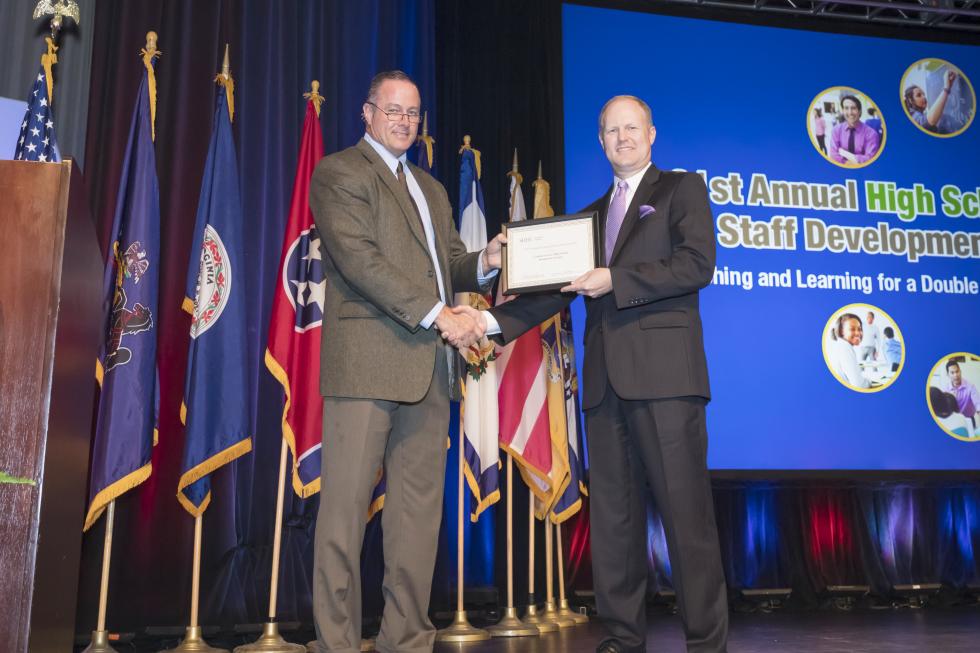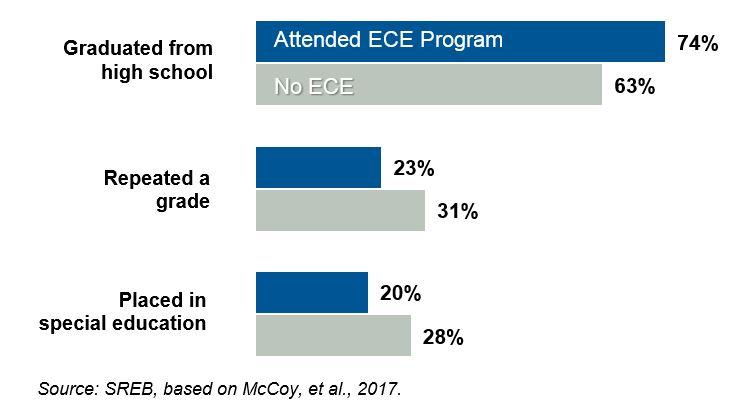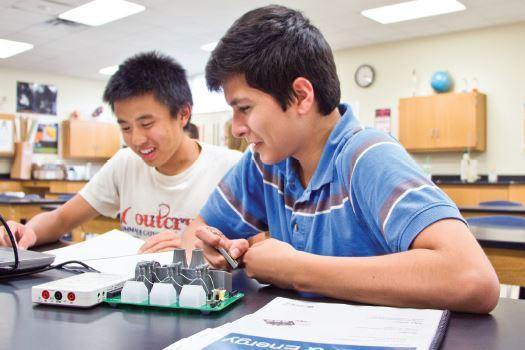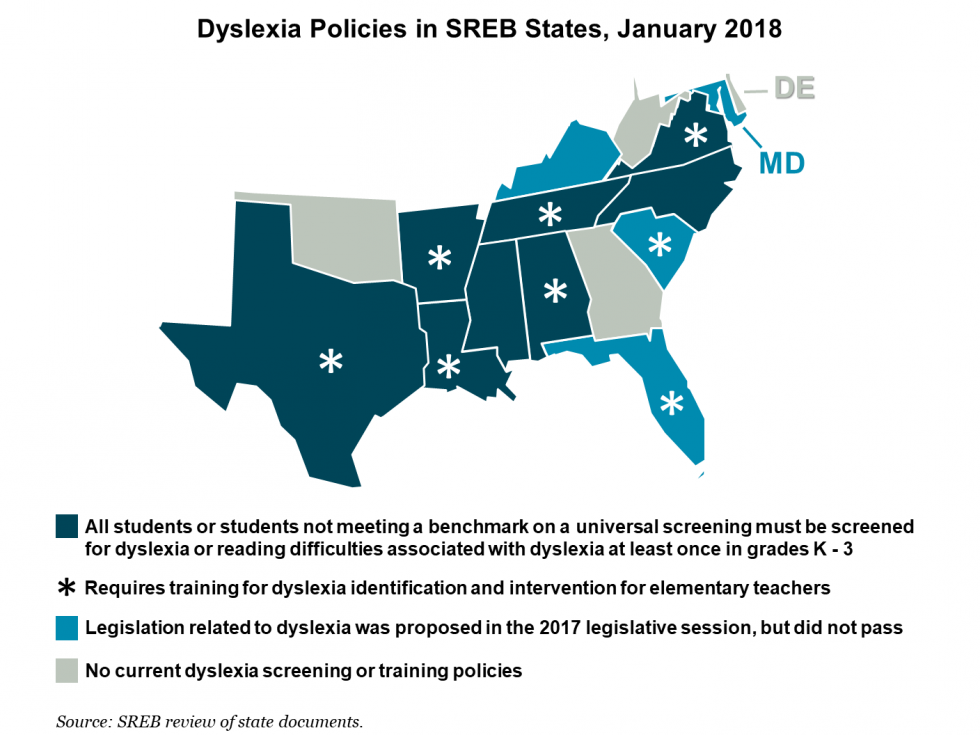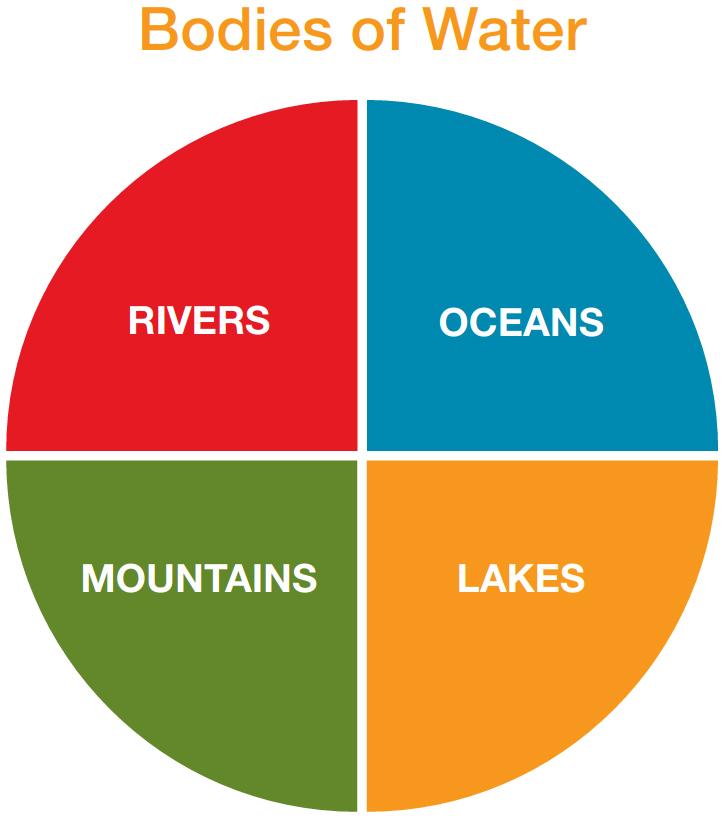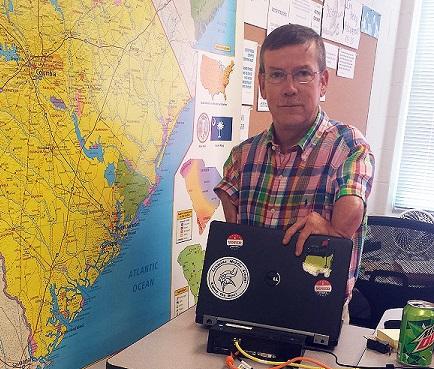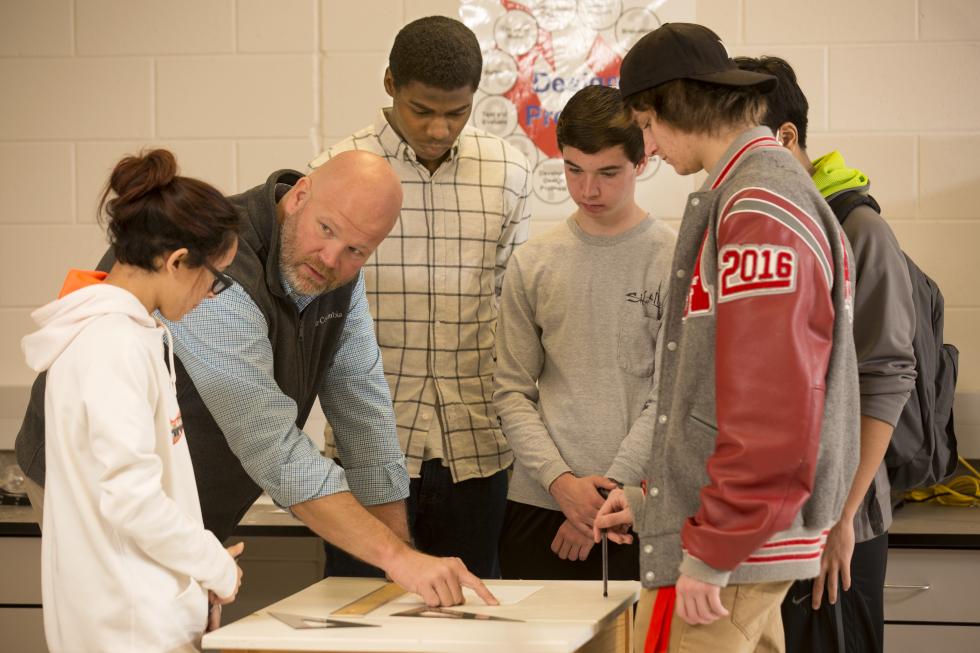Blog Main
It’s All About Community
An interview with Ansley Abraham
What’s the best advice to propel a doctoral candidate toward a successful completion of their Ph.D. goal? According to Dr. Ansley Abraham, director of the SREB-State Doctoral Scholars Program, it boils down to connecting with “people who are vested in your success.”
Dr. Abraham has been doling out that advice to doctoral students for over 25 years. In the article below, originally published on the blog – Grad | Logic: Navigating the Ups and Downs of Graduate School, Dr. Abraham shared some of his wisdom in an interview with Dr. Chris Golde.
Small-Town School, A Pacesetter
Georgia Schools Sets Pace Nationally for HSTW
A small-town high school has become one of Georgia’s highest-performing schools, with graduation rates comparable to those in North Atlanta’s wealthiest suburbs.
Unlike schools in many upscale suburbs, Camden County High School in Kingsland, about 35 miles north of Jacksonville, Florida, draws 45 percent of its 2,500 students from low-income families. The school is among many across the country that have used SREB’s High Schools That Work school improvement framework — newly updated, but first introduced more than 30 years ago.
Why It’s Critical for States to Move on Educational Technology
Educational technology, once the wave of the future, is now part and parcel of modern education — it supports innovative teaching methods, personalized learning models, and data systems that lead education policy makers toward better real-time decisions.
A 21st-century education is almost unimaginable without up-to-date technology, and states that address these issues now will send their best-prepared students out into the digital world.
How to Close the Readiness Gap Now for Our High School Seniors
Readiness Courses can keep students who are almost ready for college out of remedial classes
Get students the preparation they need during the high school years — not in college, when they have to pay for it.
 Too many students graduate from high
school thinking they’re ready for college, only to find
themselves stuck in remedial classwork once they get
there. This is a tragedy for the students. They believe —
and why not? — that if they’re admitted to college they have what
it takes to succeed there.
Too many students graduate from high
school thinking they’re ready for college, only to find
themselves stuck in remedial classwork once they get
there. This is a tragedy for the students. They believe —
and why not? — that if they’re admitted to college they have what
it takes to succeed there.
Students Revved Up About Learning
A New Advanced Career Curriculum
SREB and its partner states have long advocated students will respond to rigorous assignments that engage them cognitively and challenge them to use high-level academic skills to complete. Assignments that require students to struggle, think critically and try numerous approaches to solve complex projects take learning to a new level.
Not Made for Math? Think Again
How to Turn Every Student Into a Math Person
Adrienne Dumas has heard it from kids for years, like so many teachers and parents: “I just don’t have a math brain.”
A math teacher at Northwest Rankin High School in Flowood, Mississippi, Dumas disagrees, and with good reason — her Algebra 1 and geometry students have a 100 percent passing rate for the past three years on the state test. Dumas and other teachers offer their tips for math success in a recent SREB High Schools That Work newsletter.
New Research Points to Continued Promise of Pre-K
Researchers continue to examine the long-term impacts of pre-K participation, and more sophisticated methods and better data may help solidify the consensus that has already emerged: investing in early childhood education plays an important role in preparing young children for success in the early grades and pays off in the long run.
Math Classroom Strategies Steal the Show
Joy Hofmeister, Oklahoma State Superintendent of Schools, visited Moore High School in December to look at its technology program. And she did, but she also got a pleasant surprise when principal Mike Coyle showed her to an Algebra 2 classroom.
Mathematics department chair Nancy Nix reported that the superintendent was “blown away by the level of student engagement and mathematical discourse.”
STEM Is Not Too Hard for Students — When It’s Done Right
It is no secret that in the modern economy, STEM fields are in constant need of qualified workers. There simply are not enough people with STEM skills to fill vacancies, even though those who hold STEM degrees make 26 percent more than their contemporaries who hold non-STEM degrees. Countless studies have chronicled various reasons why too few students participate in STEM education; however, a new survey from Pew Research Center finds that the number one reason students are not studying STEM might be that they view these fields as too difficult.
Inspiring Students to Explore STEM with SREB’s Advanced Career Courses
How AC’s nine pathways connect classrooms, college and the careers of the future
As you know, science, technology, engineering and math (STEM) skills are in high demand in today’s fast-paced, technology-driven economy. Leading employers prize job candidates with strong communication and teamwork skills who anticipate workplace problems and can apply literacy, math and technical know-how to solve them. (Learn more in this Business Roundtable report).
Why Evaluator Training?
Our evaluation systems depend on the quality of feedback teachers receive
Over the last five years, SREB’s Educator Effectiveness team has interviewed hundreds of teachers and classroom observers, pored over evaluation data, convened state education agency staff, and read everything we could find about how to improve the systems of feedback that teachers receive. Over and over again, we ended up at the same place:
Classroom observers need training in how to understand what is happening in classrooms and how to communicate feedback in ways that teachers can hear and act upon.
Advanced Career Teachers Share Invaluable Insights From the Classroom
“I believe the Aerospace Engineering curriculum is helping students to learn and to think like engineers,” says Bill Vivian, who teaches the Advanced Career Aerospace Engineering curriculum at Sun Valley High School in Charlotte, North Carolina.
How Does My State’s New Accountability System Support School Improvement?
To answer this question for stakeholders across the region, SREB’s benchmarking team reviewed Every Student Succeeds Act plans submitted by SREB states in 2017. ESSA, signed into law in 2015, replaced the No Child Left Behind Act of 2001 as the latest reauthorization of the federal Elementary and Secondary Education Act. ESSA maintains some of the basic requirements for state accountability systems from NCLB, while also giving states new flexibility in shaping many aspects of their systems. According to the law, states submitted plans to the U.S.
The Tale of the Spoon
Closing the Achievement Gap One Utensil at a Time
 The act of teaching is hard — but the ins and outs of being a teacher are hard too. When mentors work on professional growth goals without probing a teacher’s mindset or emotional health, skill development can become distracting, stressful and even counterproductive.
The act of teaching is hard — but the ins and outs of being a teacher are hard too. When mentors work on professional growth goals without probing a teacher’s mindset or emotional health, skill development can become distracting, stressful and even counterproductive.
Don’t Be Afraid to Say “Dyslexia”
Acknowledging and identifying dyslexia is step one in helping struggling readers
Researchers estimate that dyslexia affects at least one in 10 people. As defined by the International Dyslexia Association, dyslexia is a neurobiological learning disability, unrelated to intelligence, characterized by differences in the way the brain processes language. These differences result in difficulties developing skills that are important for reading and writing. While it cannot be outgrown, individuals with dyslexia can learn strategies to help them overcome the unique challenges it presents.
Valuing Both Cs in State Accountability Systems
SREB helps states set and meet bold goals for student achievement and credential attainment
SREB has long held that high-quality career and technical education transforms how students learn by connecting the classroom with the real world of work. Our nine Advanced Career curricula exemplify the power of CTE. Each four-course AC career pathway is built around hands-on, project-based assignments that challenge students to apply academic knowledge, technical know-how and teamwork skills to solve the same problems faced by industry professionals.
Diverse needs create a challenge for kindergarten teachers
How can states help their kindergarten teachers meet students where they are and boost learning for all?
Kindergarten is an important transition to the early grades. In fact, more and more teachers say kindergarten is the new first grade. Recent research by Bassok, Latham and Rorem backs this up. In 2016, these researchers examined differences in kindergarten expectations and teaching practices between 1998 and 2010.
Seven Literacy-Based Assignments for Social Studies Classrooms
Last year, while teaching at Lakeside Middle School in Anderson County, South Carolina, my colleague Keri Compton and I came up with seven strategies specifically for social studies teachers. These mini-tasks, based on our Literacy Design Collaborative (LDC) training, use hands-on activities to build confidence and help students reflect on their learning while they’re improving their reading and writing skills. Here they are:
People, Objects, Settings, Engagement and Relationships
Raise the Rigor
Strategies to Promote Reading Comprehension
As a middle grades social studies teacher in Florence School District 1 — an area of South Carolina along I-95 known as the “Corridor of Shame” for its poverty and low-performing students — I have a theory. I believe all students benefit from rigorous, literacy-based classroom instruction, and students from poverty benefit the most. The ability to read and understand complex texts is the best way to distinguish students who are college and career ready from those who are not.
Remember, rigor doesn’t mean hard. Rigor means challenge.
Math and Literacy Teaching Strategies Have Deep, Lasting Effect
Want to see where good teaching happens? Watch what students are doing in the classroom. Sounds obvious, maybe, but as SREB senior vice president Gene Bottoms says, “We observe teachers and what they’re doing all the time — but we miss a big piece of the puzzle if we don’t see what the kids are doing as a result.”
So SREB asked My Student Survey to see how our training in powerful literacy and math teaching tools is paying off in the classroom.



